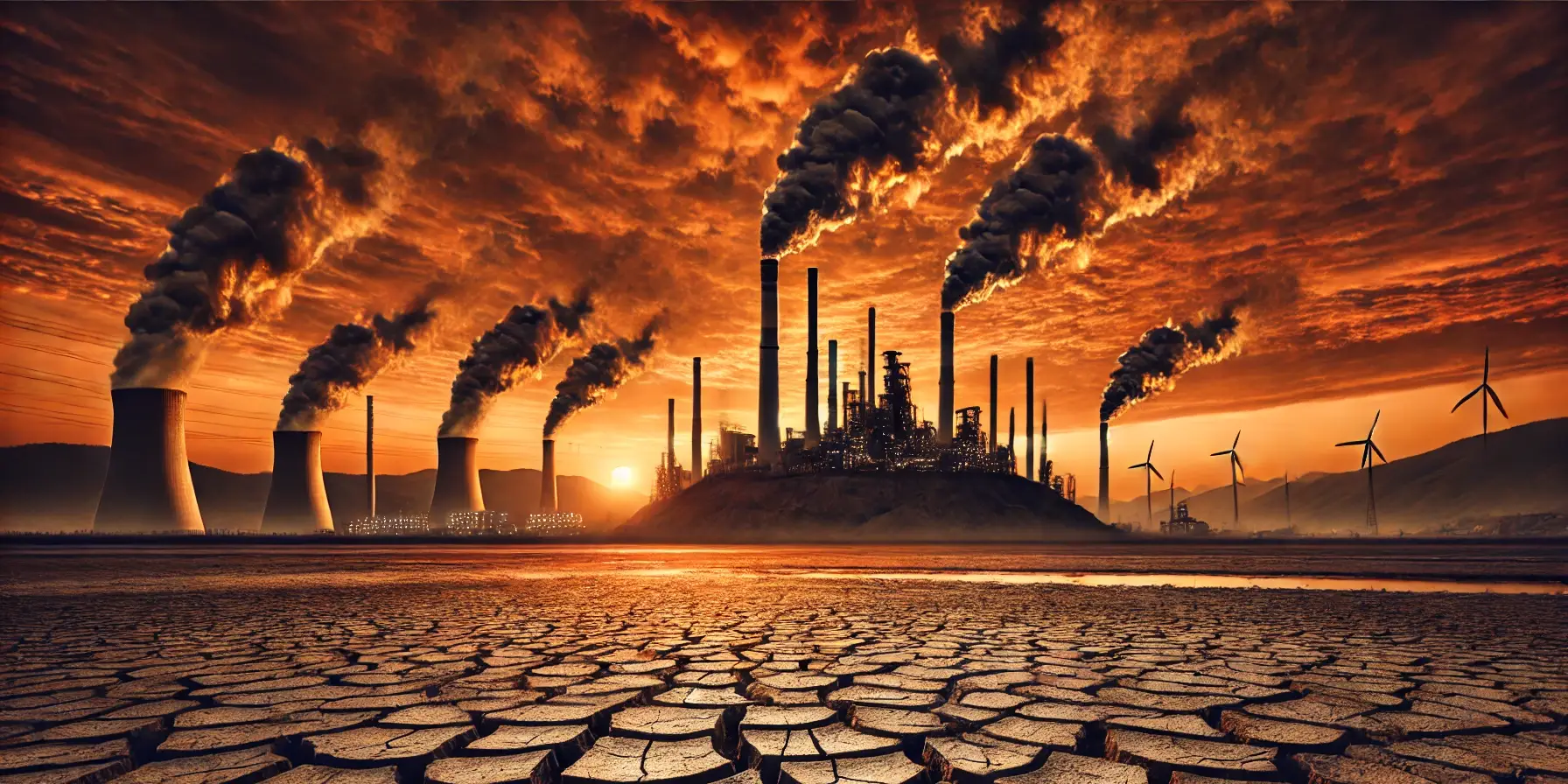It has been 10 years since the world powers decided to do something ambitious about global warming. They pledged to limit carbon emissions to keep the earth’s average temperature under 2°C (preferably 1.5°C) above the pre-industrial levels — the most crucial aspect of the Paris Agreement signed in 2015.
You would assume that in 10 years, we might have succeeded in forming some sort of direction, a strategy — even if we failed to implement it to the letter, at least a semblance of a way forward. However, the fact that in 2024, CO2 emissions worldwide were the highest ever presents a grim reality.
What’s more disheartening is that 2025 began with the worst possible news: the Los Angeles Fires, which devastated not only lives but also caused unimaginable economic loss. If this is not the wake-up call we need, then what else?
If you have been following our reporting on global warming and its devastating effects in countries of Africa, South America, South Asia, and even North America, you’d know how serious the global warming crisis has become.
The 2024 Global Carbon Budget Report, presented during the COP 29 Climate Summit in Azerbaijan in November 2024, revealed that 41.6 billion metric tons of CO2 gas was released in 2024, up from 40.6 billion tons in 2023. And that is not all; since the signing of the Paris Agreement, CO2 emissions have never seen a downward trajectory. Much of the carbon dioxide (CO2) emissions came from burning oil, gas, and coal for energy consumption, totaling 37.4 billion tons, while the remaining was from deforestation and wildfires, as tabulated in the report.
Scientists argue that CO2 emissions in 2024 made it the hottest year, breaking the 1.5°C threshold set by the Paris Agreement. This was partly due to the El Niño phenomenon, which is the natural warming of the oceanic surface in the eastern and central Pacific Ocean. The warm ocean surface creates warmer winds, causing a circulatory imbalance, resulting in extreme weather events, rain, flooding, droughts, and wildfires. The current oscillation event of El Niño began in June 2023 and continued well into May 2024. Major weather events in 2024, such as the Bolivia and Venezuela wildfires, torrential flooding in Nepal, Sudan, and Spain, and heatwaves in Mexico and Saudi Arabia, have all been attributed to the El Niño phenomenon.
Commenting on the closing of the COP 29 summit, a news report from Reuters argued that emissions from the US, the world’s leading oil and gas consumer, decreased by 0.6% in 2024. The EU’s emissions fell by 3.8%, while India’s rose by 4.6%. China contributed a plus of 0.2%, and emissions from increased air travel post-COVID-19 jumped by 7.8%.
Breaking the 1.5°C threshold may not be an isolated event, and 2025 could become another record-hot year. Ralph Keeling, director of the CO2 Program at UC San Diego’s Scripps Institution of Oceanography, said: “We aren’t just breaking records in CO2 concentrations, but also the record in how fast it is rising.”
Our readers should understand why the 1.5°C threshold matters so much. Since human civilization began, we have been burning the earth’s resources to advance society. Burning releases carbon dioxide, which trees absorb. As the population grew, so did the demand for fuel and land, so we cut down trees. Deforestation led to less absorption by trees, and the excess gas started heating our climate. And with that came other events, such as volcanic eruptions, floods, fires, drought, and the melting of polar ice, which increased ocean levels and disrupted nature’s order of things.
Before humans started expelling huge volumes of CO2 into the atmosphere, the carbon readings were about 280 ppm for almost 6000 years. Today, the latest readings put us at 426 ppm of CO2. If this continues, our climate will become alien to us, and all the dystopian times we conjure in our movies and TV shows will become a reality.
The 1.5°C threshold allows us to maintain our current trajectory and helps reverse the damage we have already done. If our average yearly temperature does not rise above 1.5°C from the pre-industrial levels, we are safe; anything beyond that puts us in uncharted territory, according to climate experts.
“Global heating is a cold, hard fact,” United Nations Secretary-General António Guterres said in a statement announcing 2024 as the hottest year on record. “There’s still time to avoid the worst of climate catastrophe. But leaders must act – now.”
A positive from the COP 29 Summit was the increased funding pledged by developed countries, which was more than $300 billion. However, it is not enough for developing nations, given the overall investment required at the present trajectory is above $1.3 trillion. World governments are doubling down on climate change, the renewable energy sector is booming, electric cars are in, and people have become more responsive. Still, where it matters, we are lacking in leadership. Some countries have to take leadership roles, and the world would obviously look to the US as the sole superpower, but is the US even ready? Trump’s second term in office and his stance on climate do not make scientists and policy pundits very optimistic.
But it remains to be seen. Till next time, let’s do our part to make our earth great again!









